The Horrifying True Story Behind the Waco Cult Compound
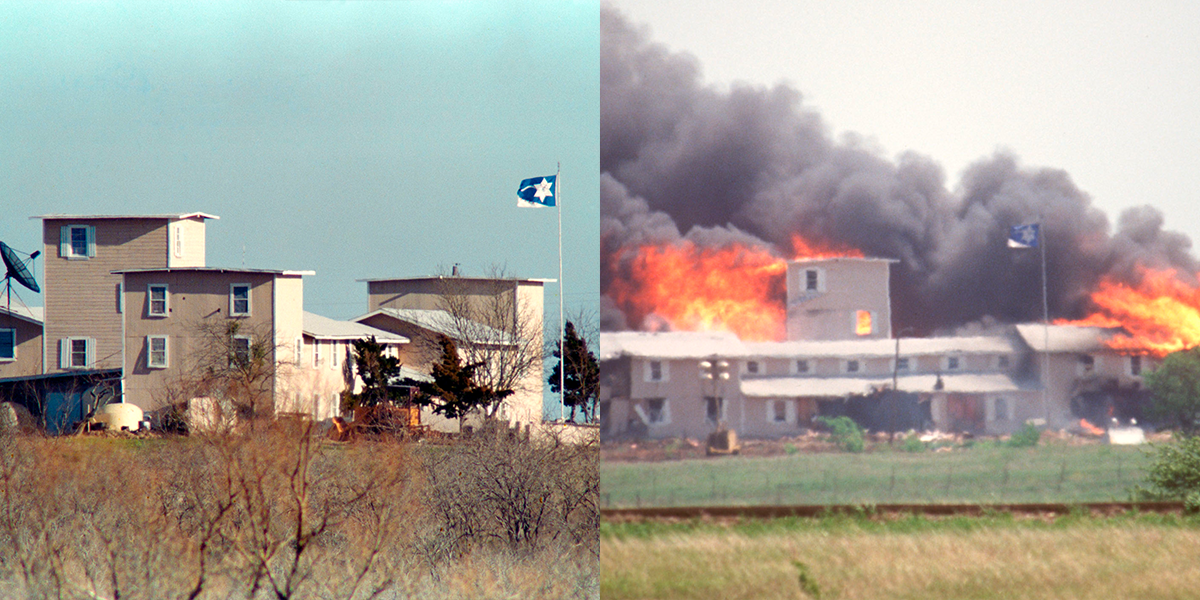
"Hearst Magazines and Yahoo may earn commission or revenue on some items through these links."
On the 30th anniversary of the devastating fire which claimed the lives of 76 Branch Davidians—members of a religious sect headquartered in Waco, Texas—the hosts of House Beautiful’s podcast, Dark House, investigate the conflict-ridden history of the 77-acre property at the center of the tragedy.
For 51 days in the spring of 1993, all eyes were on New Mount Carmel Center, an isolated ranch eight miles east of Waco, Texas, that served as the home and headquarters of a religious sect known as the Branch Davidians. The community had defied categorization for decades—many considered it a cult, while others firmly believed it to be as legitimate a religion as any other legally recognized church. Classification aside, by the early 1990s the group, led at the time by 33-year-old self-proclaimed prophet David Koresh, was suspected of illegally converting semi-automatic guns to be fully-automatic. On the morning of February 28, 1993, seventy-six agents from the Bureau of Alcohol, Firearms and Tobacco (ATF) descended on the compound, planning to enter the building, locate the stockpile of weapons, and arrest Koresh. But the operation went horribly wrong. News of the impending raid had reached the camp that morning, and Koresh and his followers were armed and ready to defend themselves when the ATF arrived. Four federal agents and six Branch Davidians were killed in the chaotic and violent two-hour shootout that ensued.
That night, the FBI’s Hostage Rescue Team arrived and set up a perimeter, surrounding the 43,000-square-foot building with a fleet of military vehicles and tanks. Negotiators began calling into the compound’s phone line in a tireless effort to convince the adults inside to surrender—or at the very least, send their children out—but progress was painfully slow. The Branch Davidians were Bible-literalists who believed not only that the apocalyptic events depicted in the Book of Revelation were imminent, but that Koresh, who claimed to be a modern-day Messiah, would be the one to initiate said events by breaking open the Seven Seals. Having stockpiled ammunition and MREs in preparation for a fight to the death against Babylon (translation: the government), the faithful had the means to hold out inside Mount Carmel for quite some time.
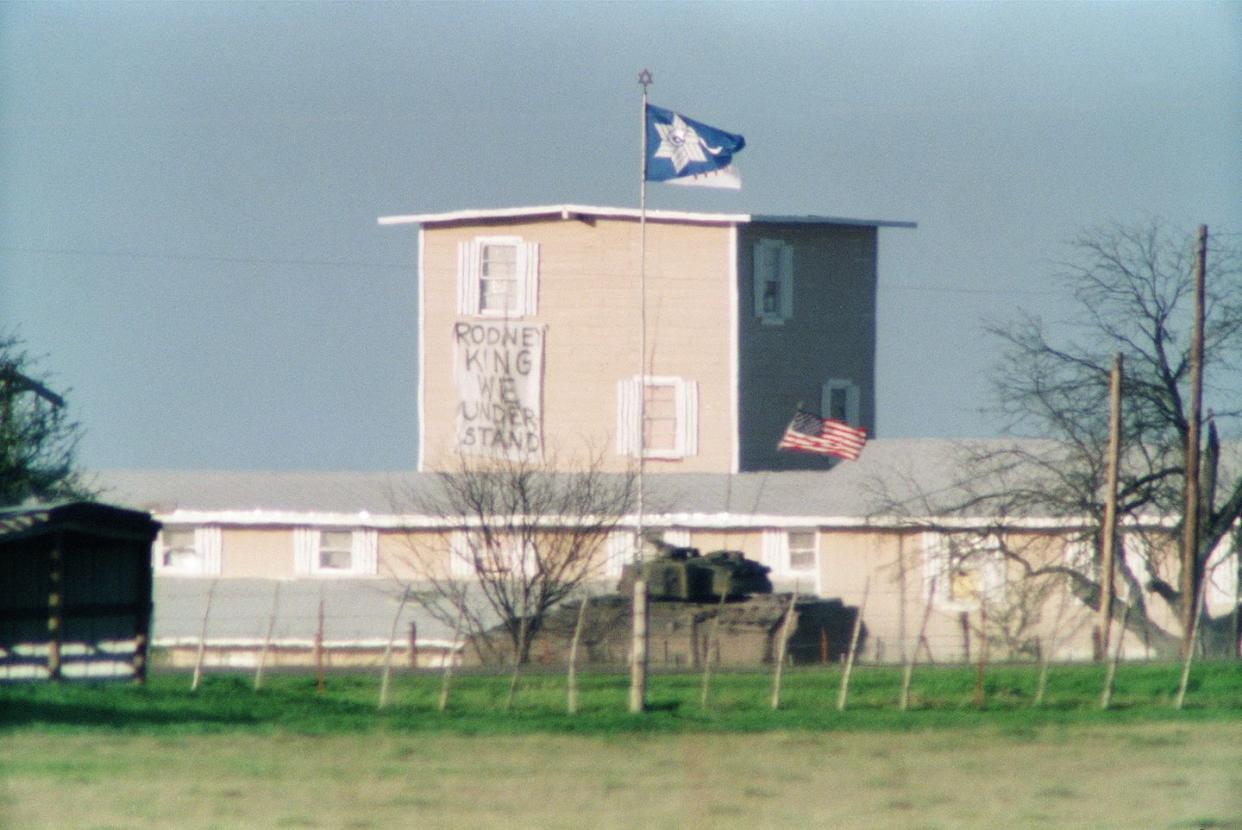
Establishing trust between both sides proved to be a next-to-impossible task. On March 2, Koresh told negotiators that he and his followers would come out if his hour-long, taped sermon was aired on a national radio program. The FBI made good on their end of the bargain, but Koresh reneged, saying that God had since told him to wait to surrender. Officials quickly learned that the Branch Davidians, who adhered only to the commands of God—as written in the Bible or spoken through Koresh—had no regard for secular laws or the agents who enforced them. A growing disconnect between the FBI’s tactical and negotiation teams only exacerbated the situation.
As the weeks wore on, agents stationed outside the building began using a massive PA system to broadcast a symphony of dissonant sound effects—including babies crying and a dentist's drill whirring—night after night, depriving the Branch Davidians of sleep. This strategy, and other efforts put forth by the tactical team in an attempt to force the group out of their compound, did little to bring about their surrender. On the contrary, the use of such intimidation tactics by agents undermined the messaging put forth by negotiators, causing them to lose what little ground they had managed to gain with the sect. By mid-April, patience was wearing thin and pressure was mounting on FBI lead agents to bring the conflict to a close. All the while, news teams from across the country remained camped out at a designated roadblock roughly two miles from the 77-acre property, watching and waiting to see how the standoff would end.
On April 19th, they got their answer. Around 6:30 a.m., FBI tanks began driving their gun barrels directly through the walls of Mount Carmel, pumping hundreds of rounds of tear gas inside. By noon, a disastrous fire broke out and quickly spread throughout the building. Only nine people managed to escape before the entire compound burned to the ground with 76 Branch Davidians—including 23 children and the sect's leader, David Koresh—still inside.
To Koresh's followers, their battle with "Babylon" culminated in flames just as their leader had prophesied. But this was hardly the end; it would be years before the resulting trials and investigations revolving around the siege were finished. As for New Mount Carmel Center, the fire marked the beginning of a new chapter in its complicated history which, records show, had been plagued by controversy, public scrutiny, and criminal activity since long before the tragic events of 1993.
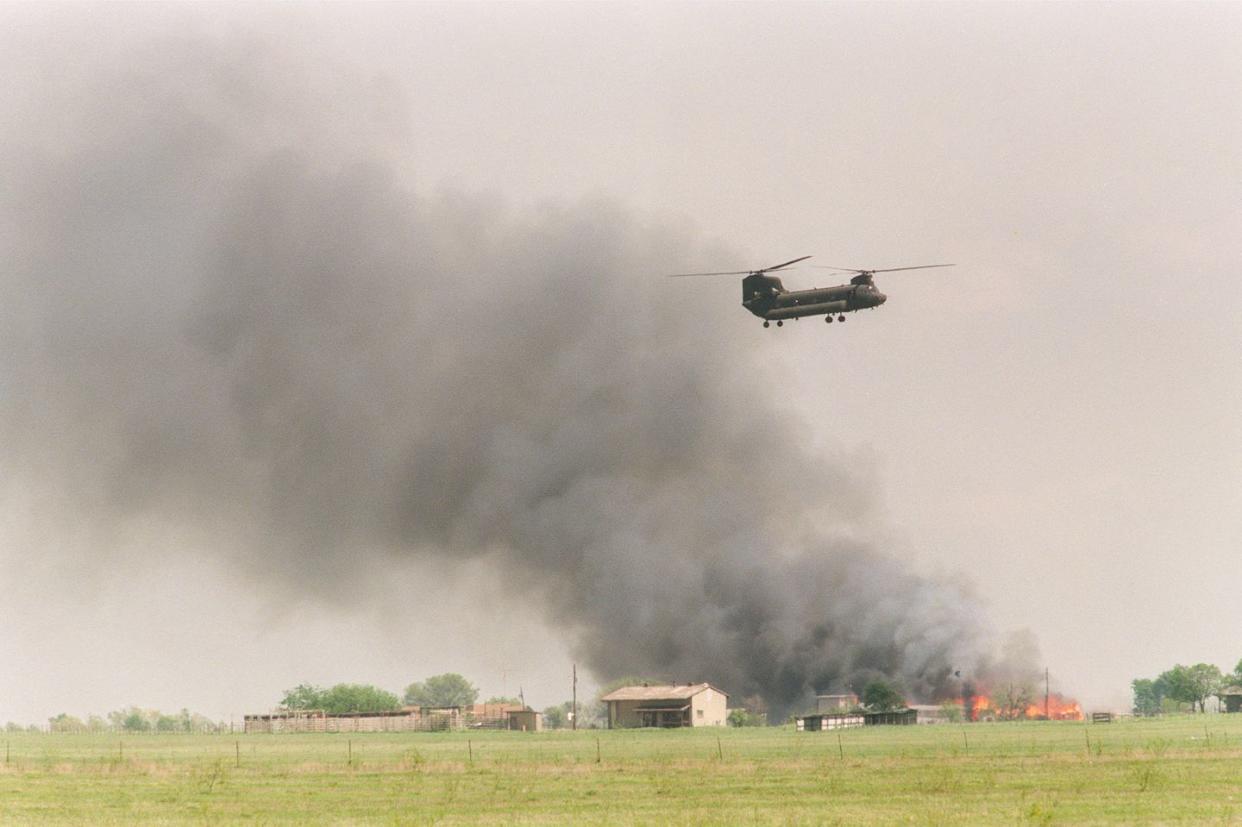
Both the Branch Davidians and New Mount Carmel Center date back to the 1930s. To understand how a tract of pasture land came to be so entangled in contention and violent crime, we must start there. Keep reading for a chronological review of the property’s many prophet-owners and the problems unleashed by each.
The First Davidians and The Building of Mount Carmel Center
1935
After failing to convince leaders of the Seventh-day Adventist church that the congregation was in desperate need of religious reform and a return to its original doctrine, Sabbath School teacher Victor Houteff decided to relocate with a flock of followers—other Seventh-day Adventists who supported his messaging and manuscript, The Shepherd’s Rod—from Los Angeles, California to Waco, Texas. The group purchased a nearly 200-acre property near Lake Waco, a few miles northwest of Waco city limits, for roughly $10,000. They named it Mount Carmel Center, after the mountain range frequently referenced throughout the Bible, and immediately got to work building out their new settlement.
1937
Houteff’s followers made quick progress in establishing their community. By the time their leader married Florence Hermanson—the 17-year-old daughter of two devoted followers—two years after the move to Waco, construction of Mount Carmel’s large administration building was almost complete. The newlyweds, who were 35 years apart in age, would eventually move into an apartment on the building’s second floor. As construction continued, Houteff purchased more land along Lake Waco, until Mount Carmel spanned a total of 375 acres. The growing settlement—which at its peak was home to about 120 residents—would eventually include a school and dormitories, an old-age home, a bakery, a dispensary, a dairy barn, and even a small farmers' market for selling excess produce grown within their self-sufficient farm community.
1942
Houteff saw to it that the ongoing construction of Mount Carmel paused for nothing. To ensure that half of his workforce would not be called away to fight for their country in World War II, he filed articles of organization to legally certify their group as a church. As such, members of the newly formed Davidian Seventh-day Adventist Association (the name was chosen to pay homage to King David) were able to claim religious exemption from the draft. In addition to the continuous expansion of their world headquarters, the Davidians also worked to recruit new members, traveling across the country and spreading Houteff’s message to other Seventh-day Adventists. By the 1980s, their following would number more than 200,000 members around the world.
Relocating, and Waiting on the End Times
1954
After nearly 20 prosperous years developing Mount Carmel Center, Houteff shifted gears to start downsizing when the expansion of Waco city limits began encroaching on Davidian property. Beginning in 1954, sections of Mount Carmel were subdivided and sold off. Florence Houteff took over liquidation efforts—and leadership of the church—following her husband’s death in February 1955, and continued listing various parcels until all 375 acres along Lake Waco were sold. Collectively, the property was estimated to have sold for about $600,000.
1957
Having sold all of the original Mount Carmel Center property, the Davidians relocated to an area roughly eight miles east of Waco city limits, where land was cheaper. They purchased a 941-acre farm and named it New Mount Carmel Center. Buildings at the new settlement were constructed as cheaply as possible—the Davidians were budgeting for a massive marketing campaign around the final prophecy of the late Victor Houteff. According to Florence, during their final conversation, her husband revealed that the End Time they’d been waiting for would arrive on April 22, 1959.
1959
In its first highly-publicized controversy, New Mount Carmel Center made national headlines when 1,000 Davidians from all over the world gathered to await a sign from God said to be coming on April 22, 1959. Expecting to be led to a promised land following April 22nd, many who arrived had sold their homes and businesses before moving to Waco, where they were now living in tents, trailer homes, and motel rooms. By late July, when still no such sign had appeared, 13 permanent buildings were constructed so that those Davidians who had remained, waiting and praying at Mount Carmel, no longer had to sleep in tents.
1960
By the following spring, most of the Davidians who had gathered at New Mount Carmel Center had given up hope. Neighbors estimated the number of people living on the property had dwindled from 1,000 Davidians down to approximately 50. Those still living at Mount Carmel operated a dairy farm. They had livestock, machinery, and a large dairy barn, as well as a small church, and a large administration building, which had office spaces and various office equipment. The property also had 18 small frame homes where families lived.
Legal Battles and Family Feuds
1962
Two years later, in March 1962, leaders of the Davidian church accepted that no sign was coming. The executive council voted to dissolve the organization and subsequently sell off its remaining assets, which included the 18 frame houses, the administration building, and 77.86 acres of land. This decision was controversial, as some remaining Davidians were not in support of selling the property; several filed civil suits that would keep the property rights tied up in litigation for several years to come.
1965
In the meantime, a small handful of Davidians remained living on the property, where several splinter groups soon emerged. One such faction was led by Benjamin Roden, a Davidian from Odessa, Texas, who attempted to purchase the remaining Mount Carmel property in April of 1965, but was blocked by the civil suits still pending in court. Roden, who claimed to have been "forcibly ejected" from the 1959 meetings at Mount Carmel, was leading a new group known as "The Branch."
1966
The legal battle over ownership of New Mount Carmel Center’s remaining 77 acres grew increasingly tense. In March of 1966, when the court issued a final ruling that generally favored the Davidian council’s vote to dissolve the church and liquidate the organization’s remaining assets, the splinter groups immediately filed appeals, further dragging out legal matters. The fighting continued outside of court, too. On September 8, 1966, Ben Roden, his wife Lois, his son George, and three other Branch Davidians were arrested and charged with burglary after they broke into a house at the Mount Carmel Center where a caretaker who had been hired by the court-appointed trustee responsible for the future sale of the property had been living, and were caught in the act of removing furniture. A few weeks later, Lois Roden was arrested again and charged with aggravated assault after she reportedly struck a member of another Davidian faction involved in the ongoing court proceedings.
1968
The fight over Mount Carmel reached a breaking point when seventeen people, including the Rodens, were ordered to move off the premises—where they had been living in violation of a 1966 court order—by October 3, 1968, or else face jail time for contempt of court. In return, the seventeen Davidians filed a petition against the eviction. Then, on October 9, 1968, Tom Street, the court-appointed trustee of the Davidian church, received permission from the court to sell the Mount Carmel property to The Branch. At the time, the price for the 77 acres of land, the frame houses, a church, and the administration building was set at $70,000. However, documents later filed with the McLennan County Clerk’s office state that New Mount Carmel Center was sold on February 26, 1973, in a private sale executed by Tom Street to Benjamin Roden, Lois Roden, and George B. Roden, Trustees for the General Association of Branch Davidian Seventh Day Adventists, for $30,000.
1977
Lois Roden told Branch Davidians she'd received a message from God that the Holy Spirit was both masculine and feminine, establishing herself as a prophet with a direct line to the divine. As her power grew, there was a period of (relative) peace and quiet for the next few years at New Mount Mount Carmel Center, though it wouldn’t last. Following Ben Roden's death on October 22, 1978, Lois Roden effectively took over as President of the General Association of Branch Davidian Seventh Day Adventists. Her appointment was immediately contested by her son, George Roden, who in 1979 called for an official vote on the matter. Lois won the majority vote and was eventually forced to file a restraining order against her son—who continued to argue that the position was rightfully his—banning him from Mount Carmel and forbidding him to return.
Though George Roden made a habit of violating the restraining order that barred him from Mount Carmel property, Lois Roden was able to settle comfortably into her new leadership role there. She led daily prayer and bible study sessions each morning, and she also implemented the consumption of grape juice and unleavened crackers, symbolizing the blood and body of Christ, into the residents’ daily routine. She began referring to her followers as the "Living Waters," a name that ties back to several Biblical passages—though the name on the deed to Mount Carmel remained the General Association of Branch Davidian Seventh Day Adventists. In addition to her daily leadership duties, Lois also spent a lot of time traveling to speak at various religious gatherings. While rewarding, the work was tiring, and she would soon begin to worry about who might eventually replace her as leader.
The Rise of David Koresh and Further Chaos
1981
Lois Roden found her protégé when a new face arrived at Mount Carmel in the summer of 1981. After a few years of personal turmoil, Vernon Wayne Howell (who would legally change his name to David Koresh in 1990) turned to God for answers. He joined a Seventh-day Adventist parish in Tyler, Texas, where he quickly frustrated church leaders with relentless questions regarding the existence of modern prophets. Upon hearing of a group in Waco that was supposedly being led by a true prophet, the 21-year-old made his first trip out to New Mount Carmel Center. Shortly thereafter he began attending private Bible study sessions in Lois Roden’s living quarters. After a few years under her mentorship, Howell was clearly poised to eventually succeed Lois as leader of the Branch Davidians.
1984
Lois Roden’s relationship with Vernon Howell caused tensions to rise. After George Roden heard that Howell had begun having sex with his 67-year-old mother, he returned to Mount Carmel and accused her mentee of rape. When George continued to make threats, Howell and a group of his supporters moved away from Mount Carmel. They soon purchased 20 wooded-acres in Palestine, Texas and set up camp.
1986
Following Lois Roden’s death on November 10, 1986, George Rodeo officially assumed control of the New Mount Carmel Center, where about seven families remained in the community.
1987
The next year, New Mount Carmel Center made headlines again, on more than one occasion. At the time, the General Association of the Branch Davidians owed more than $62,000 in back taxes on the property, which hadn’t been paid since 1968. When county officials threatened to seize the 77-acre tract and sell it at auction, George Roden took the tax battle to court. In a brief filed in the 10th Court of Appeals and the Texas Supreme Court, he threatened the justices reviewing his case, saying: "Maybe God will make it up to you in the end and send you herpes and AIDS, the seven last plagues."
Reports from Mount Carmel grew more bizarre as the year went on. From his new location in Palestine, Texas, Vernon Howell filed a deed with the McLennan County Clerk’s office removing George Roden as trustee of The Branch Davidian Seventh-Day Adventists and naming himself as President. In response, Roden allegedly exhumed the body of former Davidian Anna Hughes from a makeshift cemetery on the property and challenged Howell to a contest—whoever could raise her soul from the dead should be the group’s true leader. Rather than engaging in a duel with Roden, Howell reported him to the police for corpse abuse, but officials said they would need proof of the body-snatching, rather than taking Howell's word for it.
On November 3, 1987, Howell and seven of his followers snuck onto Mount Carmel property in an attempt to photograph Anna Hughes' casket, which they believed was being stored inside the chapel. The mission was unsuccessful, and following a shootout with Roden, the eight men were arrested and charged with attempted murder. A jury later acquitted the seven Koresh followers but was deadlocked on their leader. Eventually, though, his charges were dropped. Meanwhile, George Roden was sentenced to six months in prison for contempt of court relating to the threatening language he used in the brief regarding his property tax battle.
Porn, Polygamy, and The Siege
1988
With George Roden finally out of the way, Vernon Howell, now calling himself David Koresh, took charge of New Mount Carmel Center along with his followers. Upon their return, they found the property in a state of disarray. A large amount of printed pornography was discovered—and then destroyed—in the small frame homes, which George Roden had rented to outsiders as a means of paying the overdue property taxes. Authorities were called to collect remnant lab equipment that had seemingly been used to cook meth.
Following an extensive cleanup, renovations began. Koresh’s followers deconstructed the 18 frame houses, using the cheap materials from those smaller structures to build their massive, 43,000-square-foot facility. When construction on the L-shaped building was completed, it included a kitchen and cafeteria-style dining room, a chapel, and a gymnasium, as well as a pool and a water tower out back. But the it did not include indoor plumbing or running water, except for the kitchen sink, and most rooms were without electricity. As a result, women and children used chamber pots kept in their bedrooms, and men used an outhouse behind the building, where a makeshift shower had also been rigged. They had kerosene lamps for light, a handful of space heaters for warmth in the winter, and a few fans during the hot, Texas summers. The only air conditioning inside of Mount Carmel came from a small window unit in David Koresh’s second-floor bedroom.
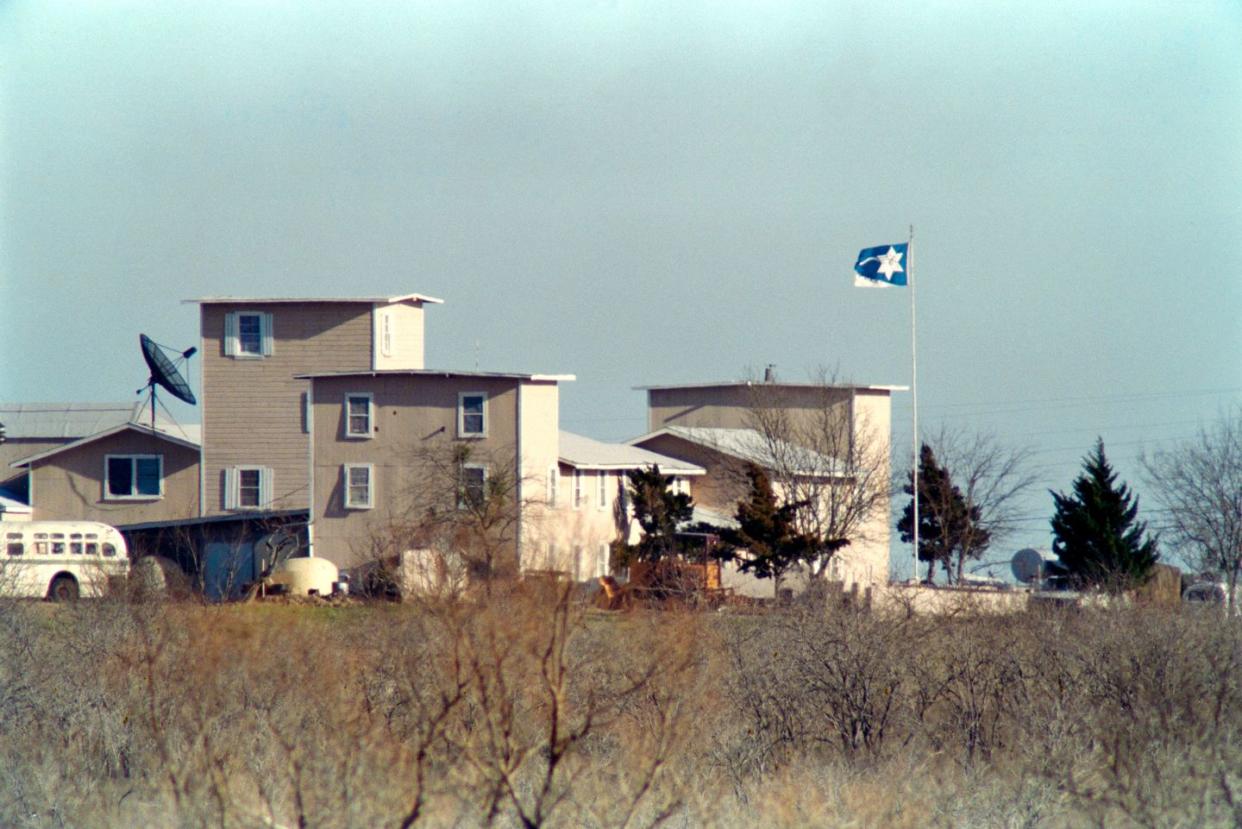
In addition to erecting their compound, the Branch Davidians also began work on a large excavation project directly beside the building, which authorities believed was intended to be some type of bunker. The long, rectangular pit was connected to the building by an old yellow school bus that had been buried to serve as a makeshift underground tunnel.
1992
The pro-Koresh Branch Davidians managed to live under the radar for the next few years following their return to the property, but early in 1992, Mount Carmel was in the news again when the Waco Tribune-Herald began covering unfounded claims that the group was planning a mass suicide to take place there on Passover that year. It was also around this time that Child Protective Services began investigating allegations of ongoing child abuse at Mount Carmel, where, per Koresh’s instructions, children as young as six months were disciplined with a public spanking on the rear end using a wooden spoon referred to as "the helper." The adults at Mount Carmel admitted to spanking the children, though they denied the punishments ever reached a level of severity where children were physically hurt or bruised. After nine weeks of interviews with both children and adults living at the compound, DCS closed their investigation, having been unable to secure evidence corroborating the child abuse claims reported by former Koresh supporters who had come to disagree with his teachings.
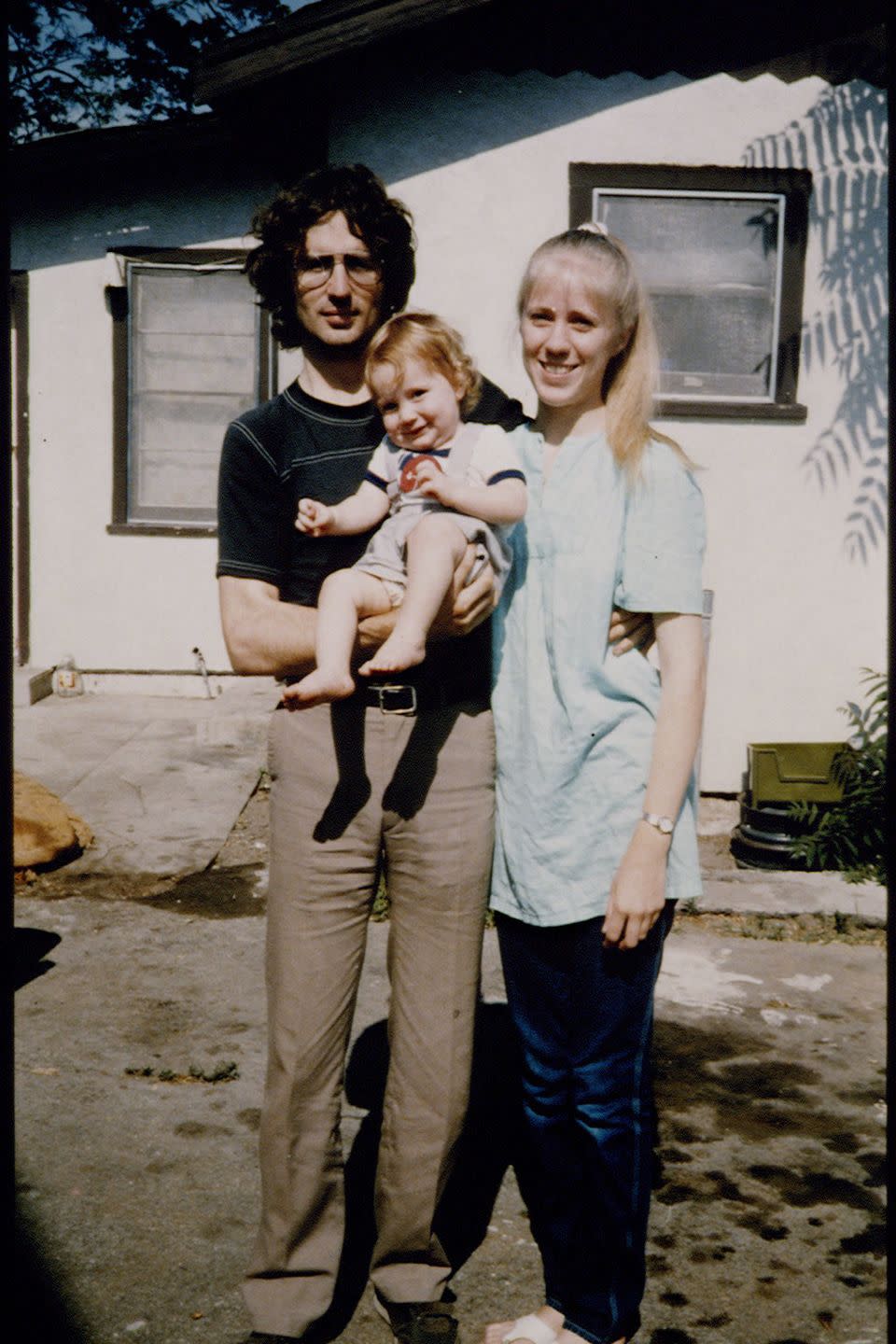
Koresh had also been accused of having sexual intercourse with underage girls at Mount Carmel—in fact, his former followers say he'd admitted to having intercourse with Michelle Jones, the younger sister of his legal wife, Rachel, when Michelle was just twelve years old. He’d taken several other "wives" since receiving instruction from God to do so in 1986. Then, in 1989, he claimed all of the women at Mount Carmel as his. All existing marriages, aside from his with Rachel, were annulled, and thereafter the men of Mount Carmel were forbidden from having sex altogether. In addition to this institutionalized polygamy, Koresh had ordered a number of Mount Carmel residents, who had been recruited from Seventh-day Adventist churches in the U.K., not to go outside after their visas had expired. By the time he had his followers converting semi-automatic guns to be automatic, he was already violating countless laws.
1993
New Mount Carmel Center reached the height of its media notoriety during the 7-week standoff between Branch Davidians and the FBI in spring of 1993. Following the April 19, 1993 fire, after authorities had finished canvasing the scene, what little that remained of Mount Carmel was bulldozed. The desolate patch of dusty gravel that was left behind became a macabre tourist attraction, drawing a reported 2,500 visitors over the July 4th holiday. The following weekend, county officials closed the road leading up to the compound. By August, health officials concerned about rotting food and human waste had quarantined the site, fencing off the entire area, which was also said to be contaminated with lead from ammunition that had melted during the fire. The soil had also been soaked with 2,000 gallons of diesel fuel, which was spilled when agents ruptured 500-gallon tanks to deprive the Branch Davidians of their generators.
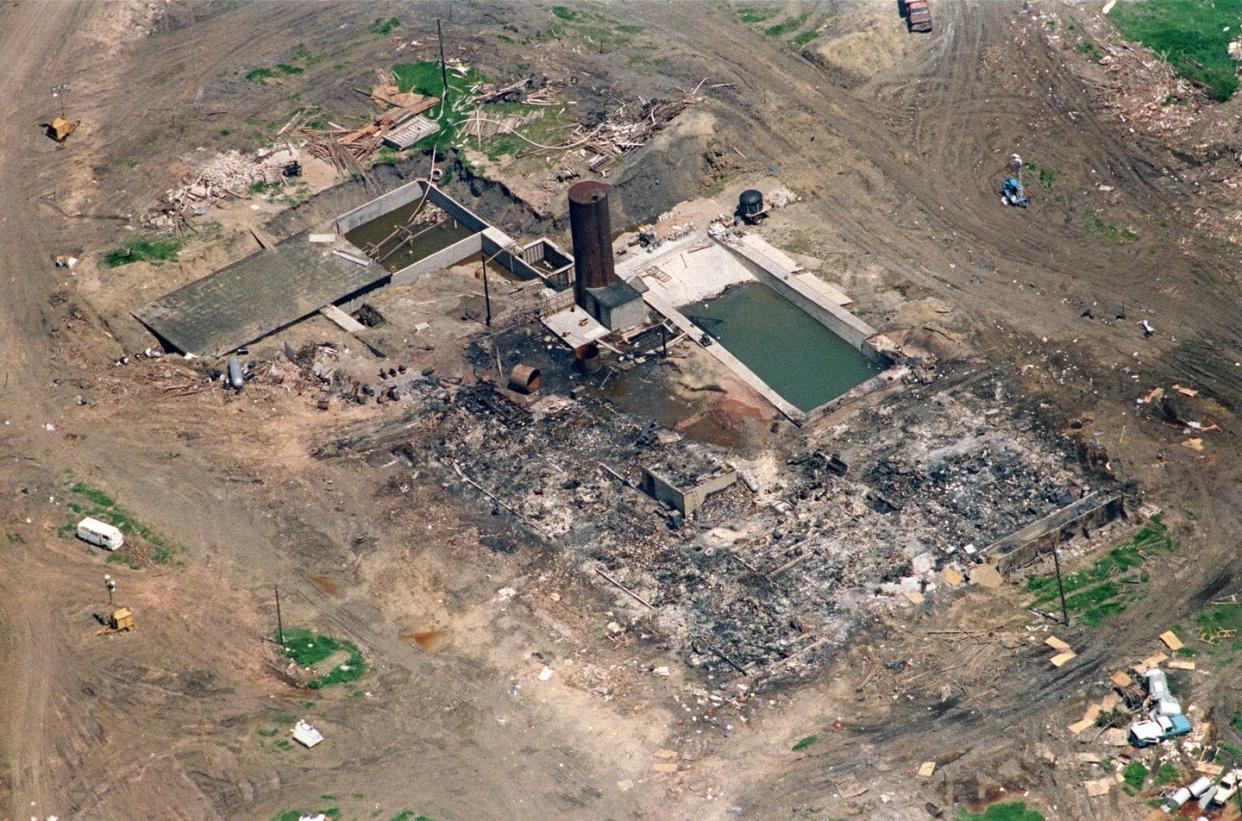
After the Siege
1994
Once the ashes settled at New Mount Carmel Center, several former Branch Davidians returned to the site to stake their claim over the property—and stir up trouble with local authorities. In July of 1994, Amo Bishop Roden, a woman who claimed to be the common-law wife of George Roden—he had been institutionalized since he admitted to murdering his roommate in October of 1989—was arrested and charged with disorderly conduct for blocking the entrance to Mount Carmel. Police were called to the site when Mrs. Roden sat near the property’s chain-link gate, refusing to let cars pass in or out of the fenced area. This appears to be the first time Mrs. Roden was reported to authorities since she first arrived at the compound around August of 1993, but it would not be the last. Later in November, police were called to the property four days in a row for disturbances involving Mrs. Roden. Following the fourth incident, in which she fired a single warning shot into the air after being asked to move some of her belongings from a small shed on the property, the 51-year-old was arrested and charged with felony deadly conduct. Mrs. Roden was released on $3,000 bond and returned to the property, where she continued to claim rightful ownership through her estranged husband.
1995
On the second anniversary of the fire, a commemorative memorial was unveiled during a ceremony on April 19, 1995. Eighty crepe myrtle trees were planted on the property, one for each of the Branch Davidians who died in 1993. Below each tree was a small granite marker with the name of one of the victims. During the ceremony, members of a group calling itself the Northeast Texas Constitutional Militia also dedicated a marble marker to the Davidians who died there. On the same day, miles away in Oklahoma City, 168 people were killed when domestic terrorist Timothy McVeigh set off a homemade bomb outside the Alfred P. Murrah Federal Building, citing the Waco siege two years prior as part of his motivation. The following month, Amo Bishop Roden told reporters that visitors to Mount Carmel had tripled since the bombing.
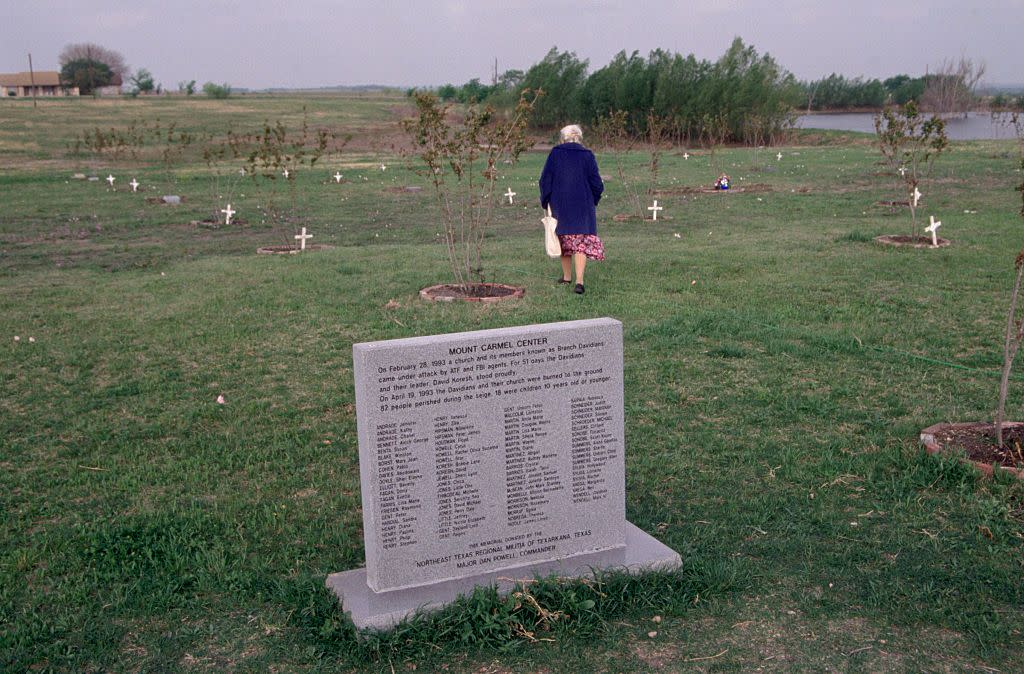
In July, another monument was added at Mount Carmel, this time by Charles Pace, an Alabama minister who had lived there while Ben and Lois Roden were still at the helm. Pace had returned sometime after the fire with a small following of his own and dedicated the monument bearing the name "Living Waters Branch of Righteousness" to his group. For the next few years, he lived on the property in contention with Amo Bishop Roden, she in a small wooden shack built near the entrance to Mount Carmel, and he in an air-conditioned camper parked less than 100 yards away.
1997
In January 1997, a mysterious fire drew local authorities back to New Mount Carmel Center. The sheriff's department suspected that the fires, which destroyed Amo Bishop Roden's shack and two small buildings she used as museums, were set intentionally, though they didn't have any suspects in connection with the crime. The former Mrs. Roden had recently remarried and was now living on the property with her new husband, Thomas Drake, and his brother. She remained involved in the legal battle over ownership of Mount Carmel until around May of 2000.
In June of 1997, the General Association of The Branch Davidian Seventh Day Adventists were reorganized and reformed under a new name: "The Branch, the Lord (YHVH) Our Righteousness." Documents filed with the McLennan County Clerk’s Office list Charles Joseph Pace as President of the reorganized church.
2000
In the new millennium, the Branch Davidians began to rebuild. Controversial radio host Alex Jones led a volunteer effort to construct a new chapel at Mount Carmel over the spot where the previous chapel had been. Supporters and sympathizers from more than 43 states, as well as Canada and Australia, donated over $93,000 in funds and materials for the project. Over the course of 32 weeks, more than 1,200 people volunteered their time to help build the 40-by-65-foot, tan frame building. During a dedication ceremony on April 19, 2000, Jones named Clive Doyle, one of the nine Branch Davidians who escaped the fire, as trustee of the new church.
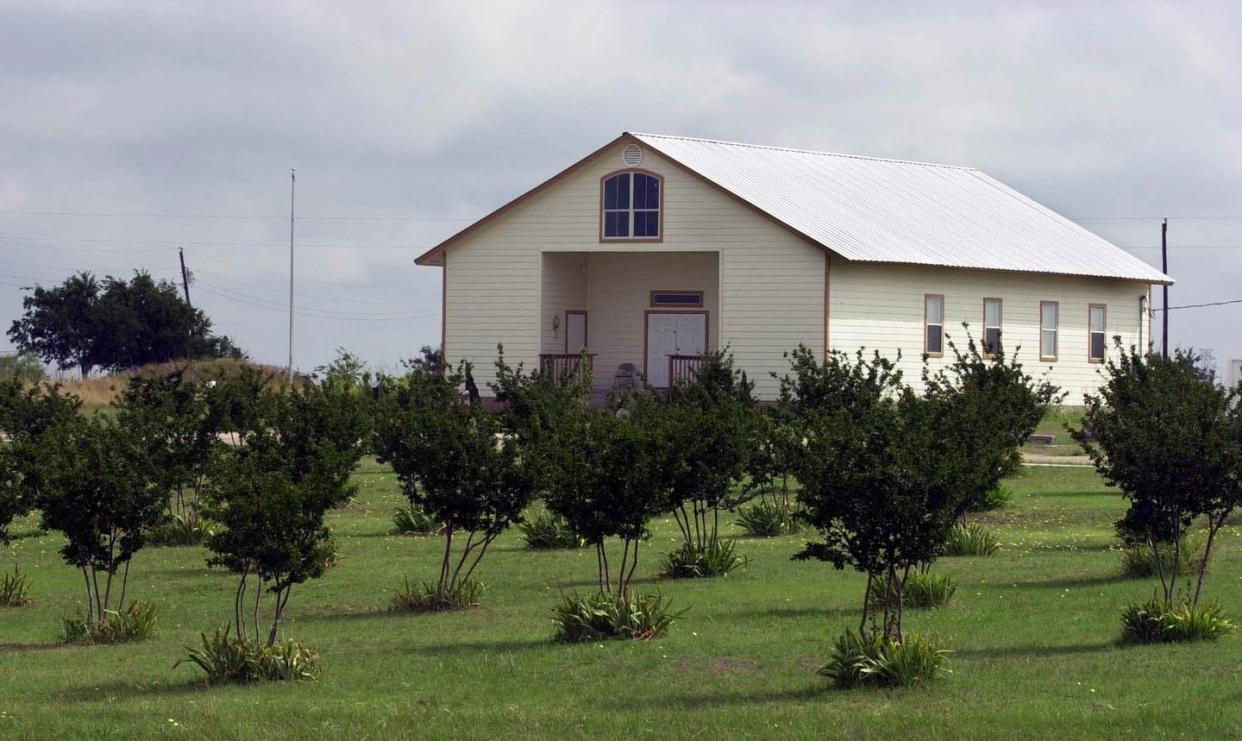
The following month, an ongoing suit revolving around ownership of Mount Carmel was settled. After two and a half hours of deliberations, a jury decided that neither the surviving followers of David Koresh, led by Clive Doyle, nor Amo Bishop Roden were legitimate trustees of the Branch Davidian church, and thus had no official claim to its property.
2006
After several years of coexistence at New Mount Carmel Center, the competition between pro-Koresh and anti-Koresh Branch Davidians came to an end when Clive Doyle, who had been operating a museum and leading services in the chapel for fellow surviving Koresh followers, moved away from the property. Doyle told reporters that he made the decision to finally leave due to conflicts with Pace.
2007
Having gained total control over New Mount Carmel Center once and for all, Charles Pace, now living in a house behind the new chapel built in 2000, spoke with reporters about his renovation plans for the property. Pace said he hoped to build out a settlement that would include a museum and gift shop, an amphitheater, a biblical petting zoo, and a wellness center, among other facilities. In the meantime, while a lack of funds delayed the project, Pace made alterations to the memorials that had been dedicated in 1995. He removed the granite markers that had been set beneath the 80 crepe myrtle trees and later rebuilt them into a wall alongside other memorials by the property’s entrance. The tree dedicated to David Koresh was destroyed, and Pace said he was considering tearing down the other trees as well.
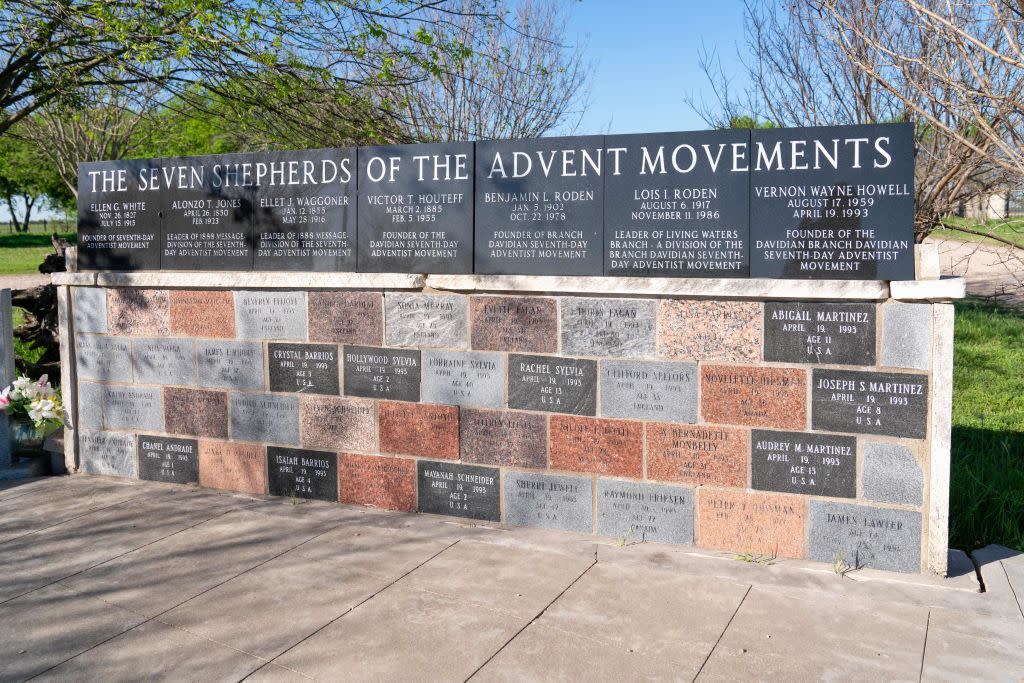
2011
Pace's ownership over the property was made official a few years later in a declaration filed with the McLennan County Clerk’s office which lists The Branch, the Lord (YHVH) Our Righteousness as owner of New Mount Carmel Center, and Charles Pace as President of the church.
2016
New Mount Carmel Center made headlines once more in an exclusive interview with Charles Pace published by the Daily Mail. Photographs in the report showed that Pace's 2007 renovation plans had fallen short, though he did install a kitchen at the back of the church and a large shed outside it. The report also showed that the old swimming pool, which survived the 1993 fire, was being used for aquaponics.
2023
Thirty years post-siege, the New Mount Carmel Center is still a center of controversy. Charles Pace appears to still reside here, selling t-shirts out of the chapel (operating hours seem to vary) and promoting conspiracy theories regarding the 1993 siege.
Looking for more stories like this one? Subscribe to House Beautiful’s podcast, Dark House, to learn more about America’s most notorious homes and properties. Seasons 1 and 2 are available to stream now, wherever you get your podcasts.
You Might Also Like
